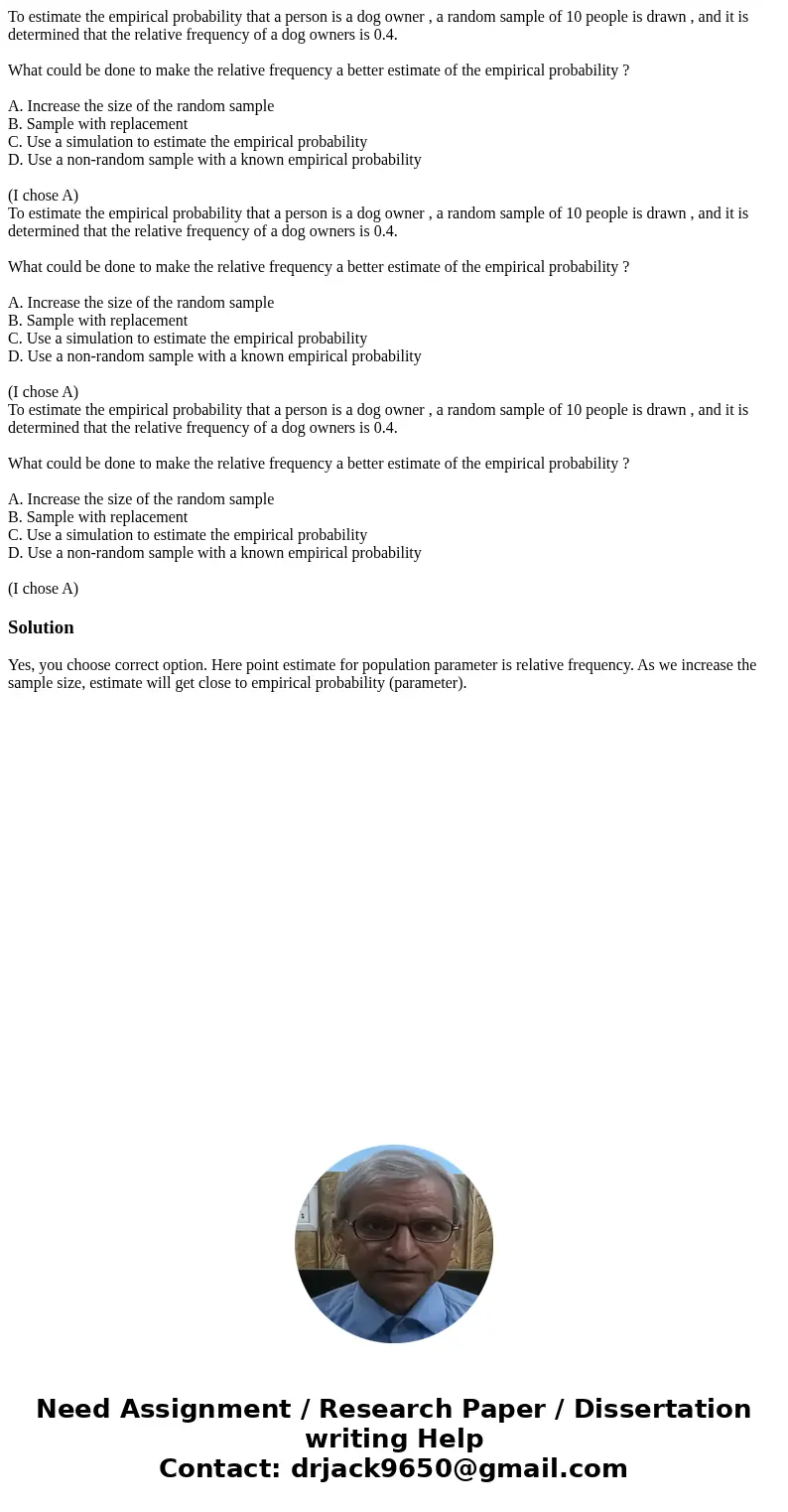To estimate the empirical probability that a person is a dog
To estimate the empirical probability that a person is a dog owner , a random sample of 10 people is drawn , and it is determined that the relative frequency of a dog owners is 0.4.
What could be done to make the relative frequency a better estimate of the empirical probability ?
A. Increase the size of the random sample
B. Sample with replacement
C. Use a simulation to estimate the empirical probability
D. Use a non-random sample with a known empirical probability
(I chose A)
To estimate the empirical probability that a person is a dog owner , a random sample of 10 people is drawn , and it is determined that the relative frequency of a dog owners is 0.4.
What could be done to make the relative frequency a better estimate of the empirical probability ?
A. Increase the size of the random sample
B. Sample with replacement
C. Use a simulation to estimate the empirical probability
D. Use a non-random sample with a known empirical probability
(I chose A)
To estimate the empirical probability that a person is a dog owner , a random sample of 10 people is drawn , and it is determined that the relative frequency of a dog owners is 0.4.
What could be done to make the relative frequency a better estimate of the empirical probability ?
A. Increase the size of the random sample
B. Sample with replacement
C. Use a simulation to estimate the empirical probability
D. Use a non-random sample with a known empirical probability
(I chose A)
Solution
Yes, you choose correct option. Here point estimate for population parameter is relative frequency. As we increase the sample size, estimate will get close to empirical probability (parameter).

 Homework Sourse
Homework Sourse